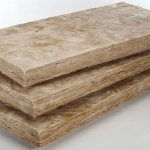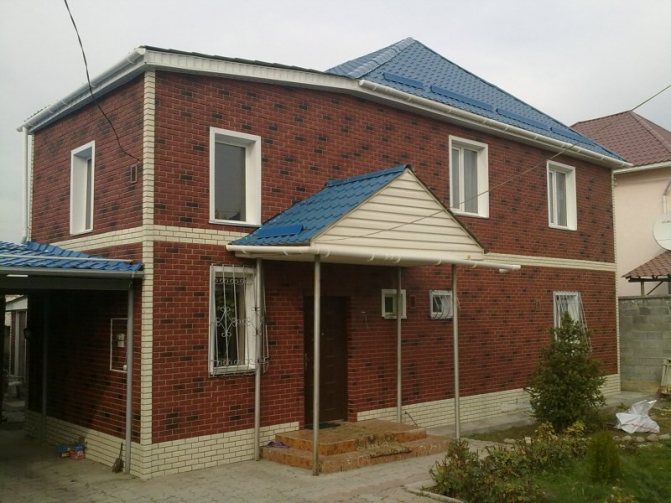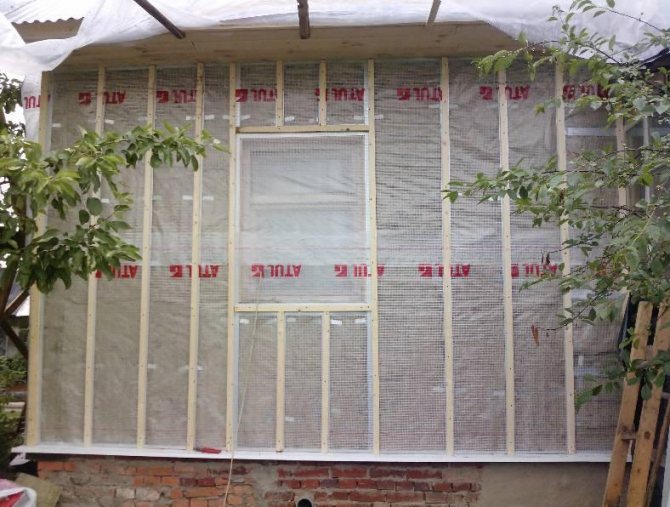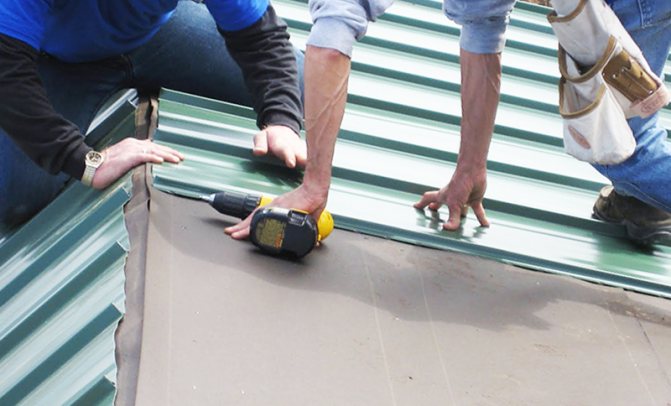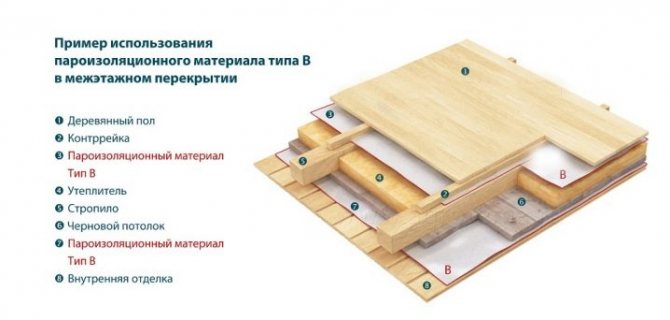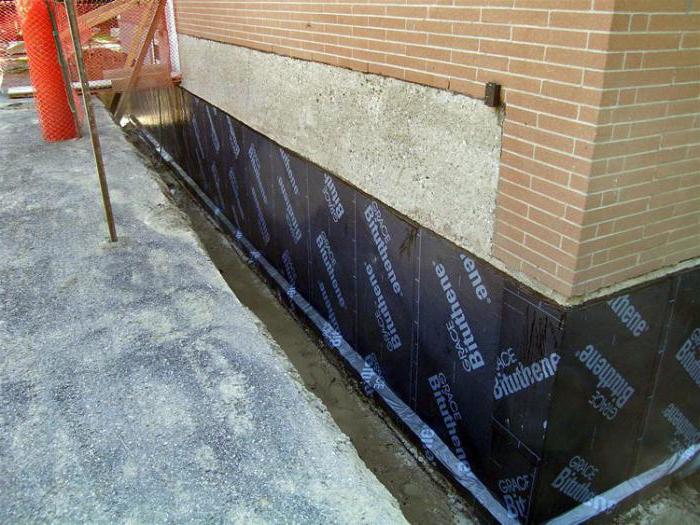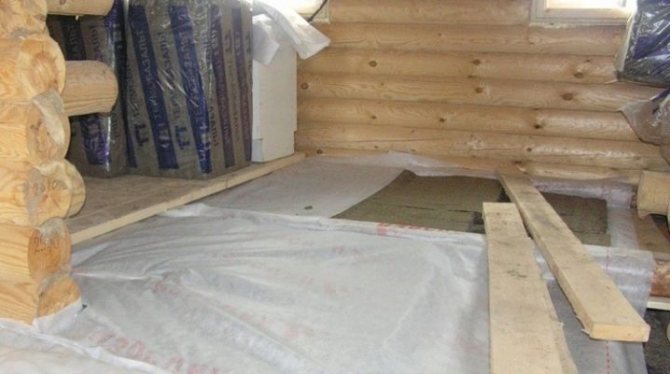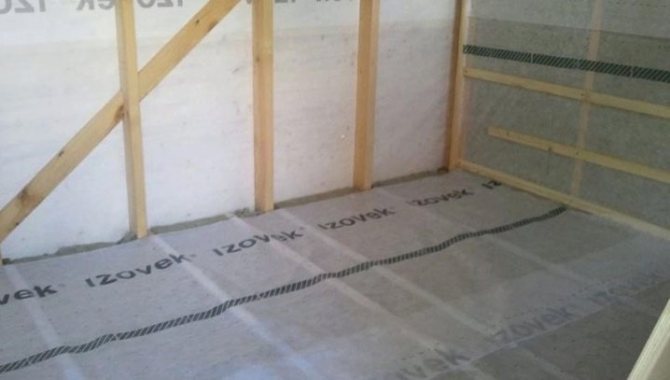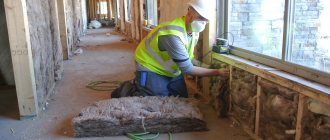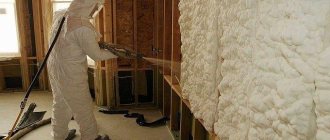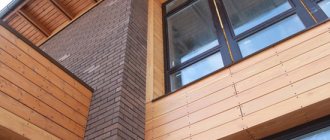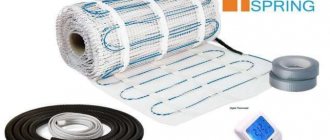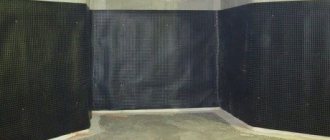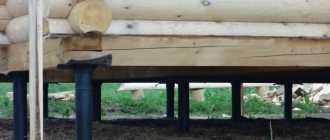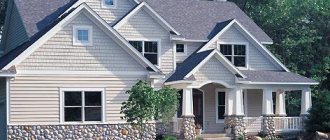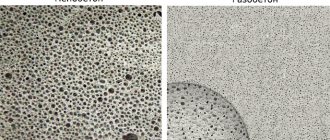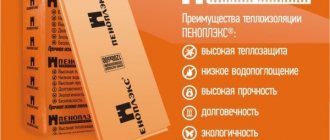- Which side to the insulation to place the rolled waterproofing
- Roof insulation waterproofing
- Waterproofing floor insulation
- Waterproofing wall insulation
Depending on the thermal insulation material used, the lack of waterproofing for the insulation can lead to various violations. For example, one of the most popular today mineral fiber insulation in conditions of high humidity or direct contact with liquid quickly lose their useful properties, becoming unusable. Being saturated with water, they deform, the structural elements under them become moldy, the wooden elements of the roof rot intensively, and the steel ones corrode rapidly.
Polystyrene foam insulation has a lower level of water absorption, but it also loses its effectiveness in a humid environment. At the same time, the destruction of building structures under them occurs more intensively.
To ensure the waterproofing of the insulation, you should:
- choose the right protective material;
- mount it in strict observance of technological maps;
- equip effective hydro and vapor barriers.
In modern construction, roll materials from films or breathable membranes are often used for this, as well as covering hydrophobic screeds, penetrating and coating compounds. The most effective technologies allow not only to prevent the flow of liquid to the insulation, but also do not prevent the release of moisture in case of accidental penetration into it.
Mineral wool
This material belongs to non-combustible, fibrous insulation. It is produced from basalt, which is melted, stretched into fibers, and then pressed using a binder (resin), resulting in slabs or mats (rolls) used for thermal insulation: roofs, floors, ceilings, ventilated facades. Mineral wool is also used in the production of three-layer building panels, when installing layered masonry. It can be used in ordinary living quarters, as well as for thermal insulation of buildings with high temperature and humidity loads (saunas, baths).
The advantages of basalt or as it is called "stone" wool are:
- Non-flammability. Even at a temperature of 1000 ° the fibers retain their structure and do not melt.
- Chemical resistance. Mineral wool is a passive material that does not come into contact with chemicals and does not corrode metal.
- Biostability. Mold, decay, fungus, rodents are not dangerous for basalt insulation.
- Compressive strength, resistance to loads, retention of geometry (dimensions, shape).
Famous waddings: HITROCK, IZOBEL, ROCKWOOL, PAROC, TECHNONICOL, IZOVER.

Materials (edit)
Insulating properties today have many substances, which are used in the arrangement of the floor.
Many experts recommend using isospan for such purposes, but besides it, there are several groups of waterproofing materials:
- Waterproofing paints. The main component of such solutions is bitumen, which is mixed with various polymers. Application is carried out with a regular brush, which allows you to cover with it even in hard-to-reach surfaces. To obtain a quality result, the surface must be carefully prepared before processing. Therefore, this approach has not found widespread use.
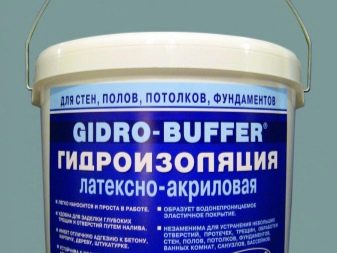

- Insulating fillings. The product is a liquid that is simply poured over the base. It is made from asphalt concrete and bituminous components.Experts recommend using fillings on concrete surfaces, since they practically do not crack and do not diverge, like wood boards.
- Loose substances. This type of material consists of granules that are not able to absorb liquid. The substance is not only a high-quality waterproofing agent, but also not a bad heat insulator. Therefore, the use of bulk mixes eliminates the introduction of mineral wool or other heat-insulating material.
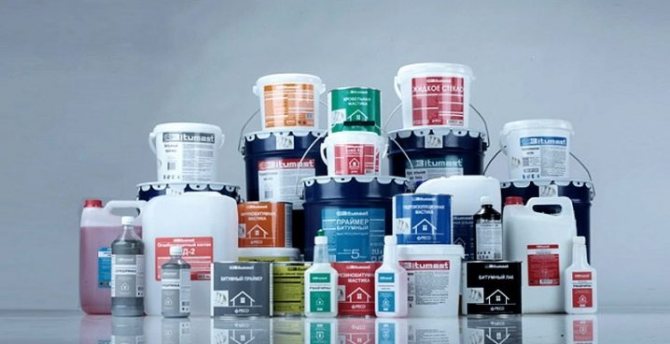

- Roll products. This group of materials is the widest and most popular. The main elements here are films that do not allow moisture to pass through. In this case, the structure of the substance may suggest the presence of pores or a dense structure. Some of them are supplemented with a self-adhesive layer. This allows you to speed up the styling several times.
The last group includes isolon, polyethylene films, thermal fiber, bitumen roll, as well as several types of membranes. The latter type of materials is used to organize vapor barrier. The structure of membrane products suggests the presence of several layers of tissue, which form an airtight substance.
Glass wool
Just like the basalt counterpart, it belongs to fibrous insulation. However, it has its own differences. Glass wool is softer due to the increased fiber length. The material is suitable only for non-loadable structures, for example, it has proven itself remarkably in pitched roof systems, and is actively used in interior partitions.


The material is produced from waste glass industry, which undergoes high temperature processing (melting), after which a long fiber is formed from it. Advantageous characteristics of glass wool: incombustibility, chemical resistance, absence of corrosive agents, immunity to biological damage.
Mineral and glass wool additionally provide effective sound insulation. They are delivered to the consumer in the form of plates or rolls. Well-known manufacturers: IZOVER, URSA, KNAUF.


Expanded polystyrene
Along with fibrous insulation, expanded polystyrene plates are often used in construction. It is produced by mixing polystyrene pellets at a high temperature and then extruding through an extruder (hence the name extruded polystyrene foam). The result is slabs / blocks having a porous structure with closed cells. Expanded polystyrene:
- Waterproof.
- Long lasting.
- Resistant to mortar and adhesive mixtures.
- Easily withstands temperature loads.
- Differs in low weight.
Depending on the density of the material, it is used at various stages of the construction of a house, for example: the device of fixed formwork, insulation of facades, foundations, basements, as well as internal walls (in particular balconies, loggias).
Thermal insulation manufacturers: Penoplex, TECHNONICOL, Tepleks, URSA, Penosteks.
When it is necessary to insulate the foundation
Insulation of the foundation is necessary in the case of a strip foundation, basement or basement. Insulation should fall below the depth of soil freezing in a given area. When using a pile or pile-screw foundation, the grillage is insulated with a fill - a vertical false wall between the wall of the house and the ground level.
For thermal insulation, materials with minimal water absorption are chosen: expanded polystyrene, polyurethane foam. Mineral wool for basement insulation is not suitable for this indicator. Also, extruded polystyrene foam is not suitable, in which the water absorption rate is 2 times higher than that of ordinary polystyrene foam, due to the different structure of the cells.
After performing waterproofing works, sheets of insulation are attached to the surface of the foundation on the glue composition: waterproof glue from dry building mixtures or glue foam is applied to the back of the sheet along the perimeter of the sheet, retreating 2-3 cm and 2-3 marks in the center.
IMPORTANT: The glue should not get on the end of the insulation plate, as in this case a cold bridge will form. The glue should be free of solvents and acetone, which can damage foamed plastics.
The sheets are fastened from bottom to top in horizontal rows in 2 layers with a gap in the seams for reliable thermal insulation.After 2-3 days, after the adhesive has set, the insulation is fastened into the pre-drilled holes with plastic dowels - screws with a metal core and a thermally insulated head at the rate of 5-6 pcs. per sheet.
The surface of the insulation above the level of the blind area is protected and finished in the same way as the wet method of insulating the facade.
Waterproofing
Waterproofing materials effectively protect building structures from moisture and climatic factors. By eliminating contact with water, the durability of all building elements is ensured, from the foundation to the roof. The main types of waterproofing materials include:
- Rolls. The covering material is a base (fiberglass, cardboard, etc.) impregnated with an insulating moisture substance. For example: roofing material, waterproofing, brizol, etc. Usually used on horizontal surfaces: floors, floors, foundations, roofs.


- Mastics. These are plastic adhesives that include dispersion fillers. After application to the surface, they form a waterproof / water-repellent layer. An example is bituminous mastics. Such waterproofing is used to cover the entire area of the base or to process seams, joints.


- Waterproofing coating. Dry mixtures that form a solution when combined with water. Such compositions, like mastics, are applied to the surface to be treated to obtain a durable waterproofing layer.


- Penetrating (water repelling) liquids. After application, for example on concrete or brick, the liquid penetrates into the structure of the base, filling all microcracks. After drying, a reliable water-repellent barrier is created.


- Films and membranes. A striking example of the well-known waterproofing is the usual polyethylene or polypropylene film. Membranes have a more complex structure, consisting of two layers separated by a reinforcing mesh. Such material is more resistant to mechanical, chemical and thermal stress.


Installation of waterproofing for wall insulation
Houses made from natural materials are beautiful enough that the outer parts of the walls are usually left intact. However, many owners are increasingly insulating their houses from the street side, decorating the walls with functional finishing materials. Modern technologies, as well as an extensive selection of materials, allow you to create a high-quality ventilation system for such facades, as well as extend the life of houses.
To perform insulation and, in particular, waterproofing the walls of a wooden house with your own hands, you will need:
- special emulsion to protect against mold and / or fungus;
- aluminum self-adhesive tape for insulation work;
- the required amount of mineral wool;
- vapor barrier film;
- construction stapler;
- a hammer;
- timber for lathing with a section of 40 × 100;
- scissors or construction knife;
- nails;
- jute tow;
- thin slats;
- dowels;
- construction level;
- self-tapping screws;
- waterproofing film;
- screwdriver, drill or hammer drill.
Work order:
- The walls are cleaned and treated with a special emulsion or several compounds, allowing each layer to dry well. An antiseptic is applied to the bars, slats.
- Treat cracks, cracks, gaps with tow, compacting the material well.
- Using slats, a hammer and nails, mount the vertical battens in 100 mm increments.
- Attach the pre-cut canvases of the vapor barrier to the crate with a stapler, laying the material with the glossy side towards you (the porous side is directed to the wall). Pay attention to creating a gap for ventilation: leave 20 mm holes between the slats. up and down. Carefully glue all joints with special tape.
- Installation of the lathing. The bars (located with an edge to the wall surface) are stuffed with nails or screwed with self-tapping screws, be sure to use a level.The step of the lathing depends on the width of the mineral wool slabs - so that it is convenient to lay it. It is important to use just a massive beam, because the facade frame will be installed on it.
- Laying of thermal insulation in a "checkerboard" manner with the complete elimination of gaps.
- Installation of a waterproofing film. Prerequisite: the overlap of the canvases is 100-150 mm. The canvases are neatly attached with a stapler to the crate. The joints are sealed with special tape.
- The ventilation gap is made using a lathing with a 25 × 50 rail. A protective metal mesh is installed below.
- Installation of finishing material according to the instructions.
Vapor barrier
Vapor barrier materials are a protective barrier that separates the zones of cold and warm air. If you exclude their use, then temperature drops will cause the formation of condensation, which in turn will destroy the insulation and other elements of the building structure. As a vapor barrier, special roll materials are used - films or membranes. They are pulled over the insulation, thereby eliminating the possibility of the formation and accumulation of moisture. Scope of application from facades to internal partitions, ceilings, roofs. IZOVEK can be distinguished among well-known manufacturers


Do not forget that hydro, steam and thermal insulation materials are a guarantee of the durability of your home.
